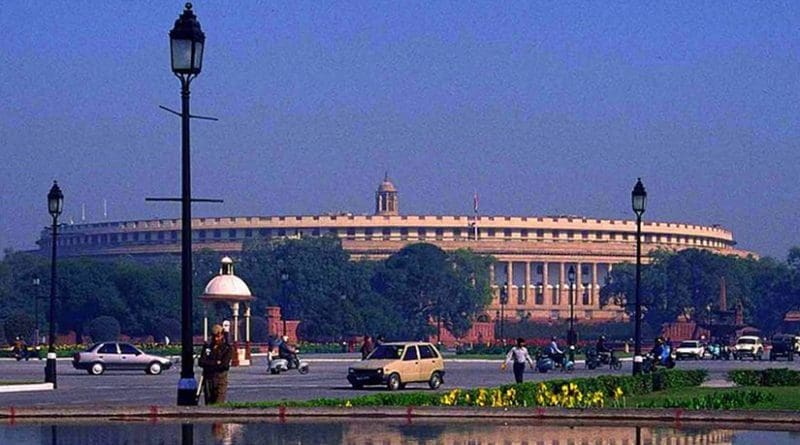Countering Extremist Propaganda: A Strategy For India – Analysis
By IPCS
By Rajeshwari Krishnamurthy*
The concept of using ‘counter-narratives’ to counter extremist propaganda is a strategy aimed to provide alternate narratives, to counter the narratives employed by extremist groups – the Islamic State (IS) especially – to attract, condition, and to recruit potentially vulnerable individuals, especially youth.
Given the high urgency for countering extremist propaganda, how can related efforts be made effective and sustainable in the Indian context?
Counter-narratives: Idea and Applications
Discourses promoting non-violent action do exist and in substantial measures. Problematically, however, narratives promoting violent action – and the resulting violent actions – get disproportionately high attention in various media, and narratives promoting non-violent action are side-lined, if not dismissed.
Consequently, public perception is often impacted to cause distortion and panic, resulting in a departure from rational approaches.
Equally Emphasising Message and Action
It is extremely important to formulate both long and short-term strategies in order to stem and eventually end the influence of extremist propaganda. A two-fold way to insulate individuals and society from threats of radicalism and violent action in the long run is by:
a. Systematically rendering the narratives propagated by extremists of all types, unacceptable, irrational, and unrealistic
b. Cultivating a general public sentiment that rejects violence as an option
Relevant messaging will have to be preceded by extensive consultations within the various wings of the government as well as between the government and the various civil society organisations, research institutions, subject experts, and communities from a cross-section of society. The way New Delhi finally defines and strategises to address this issue following such consultations will determine the future course of action.
Although action on the ground is vital, it takes longer to deliver results substantial enough to get noticed by the masses. In comparison, messaging in the form of speeches, statements etc. resonate more, and at a higher pace. Therefore, equal emphasis has to be laid on the content of the message New Delhi disseminates in this regard.
Key Components
Emphasis on non-violence: The messaging should echo non-leniency towards any individual or group committing or propagating violence, either in words or in action. Any discrepancy between the message and the action on the ground must be avoided, and both tasks should be carried out continually, consistently and simultaneously. Mutual respect, tolerance, non-violence, and justice as non-negotiable components of any discourse, debate or disagreement, should be promoted and ensured.
Engaging the masses: Public debates and conversations on the significance and need for mutual respect and recourse to non-violent means to address issues must be encouraged. A nation-wide cross-sectional conversation must be stimulated, so that citizens can insulate themselves from radicalisation of all types.
Delinking terror and religion: In a country like ours where a high degree of diversity and multi-culturalism exists, citizens perpetually juggle different identities – gender, class, religious, regional, caste, political, and occupational, among others. With such levels of complexity, unless terror and religion are delinked – in the messaging in particular – the aim of shielding the country from extremist propaganda will be underachieved.
It is counter-productive for a government to argue about whether or not any religion allows or disallows violence, in its messaging. It is also unnecessary for a government to seek and declare justifications for ‘counter-narratives’ in religious scriptures. Doing so digresses from the core matter, i.e. that extremism is extremism. Violence is fundamentally a wrongful action, and is punishable by law, and this should be the primary message.
Crowd-sourcing: Furthermore, New Delhi must, concomitant to maintaining religion-neutral language in its counter-extremism messaging, engage and promote robust and constructive cross-sectional interactions, inter-community, intra-community, and between the government and the governed.
Collective responsibility: That maintaining peace, stability, and civility is the collective responsibility and duty of both the government and the governed, should be conveyed. The citizens must also deliver on their duties to themselves and their fellow citizens, and undertake efforts to guard themselves against vulnerability to radical/extremist influence of any type. To that end, greater emphasis could be laid on familiarity with the Indian constitution.
Navigating the Landscape
‘Counter-narratives’ should be named after solutions. Radicalised individuals, or individuals vulnerable to radicalisation, are unlikely to be seeking ‘counter-narratives’ or anything that markedly challenges something they believe. Simultaneous efforts should be undertaken to uproot the very reasons that cultivate vulnerability in individuals.
India will need a tailor-made strategy that takes into account civilisational and contemporary societal contexts. Confidence and the ability to trust is essential to make India’s 1.2 billion people more resilient to social regression.
Straightforward, concerted, multi-way interaction is required. Peace narratives must be treated as promoting human values, instead of only as a ‘counter’ to the extremists’ narratives. To ensure that this task is achieved not just wholly or in full measure but substantially, New Delhi must be wise in its choice of words and action, and consistently and comprehensively emphasise and promote the need and significance of non-violent action as a means to address any type of grievance – not just terror-related.
Practising and promoting non-violence is not a post-facto effort. It is and has to be a continuous process, and a duty of every individual.
* Rajeshwari Krishnamurthy
Research Officer, IReS, IPCS
E-mail: [email protected]

